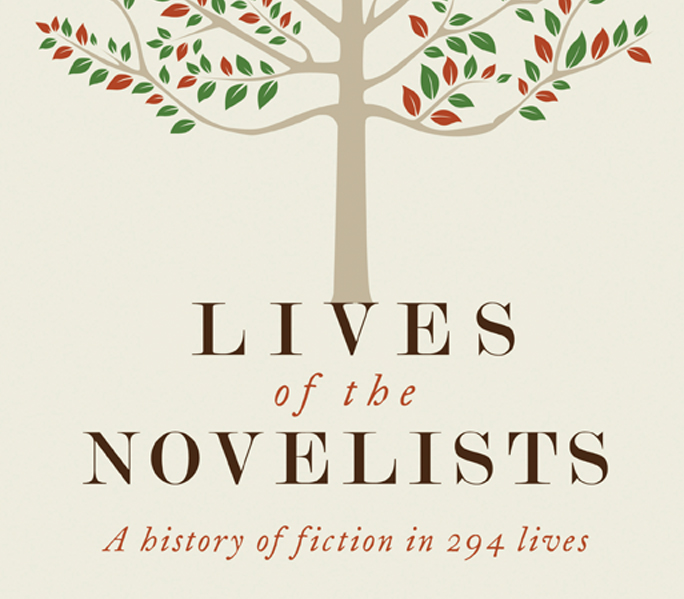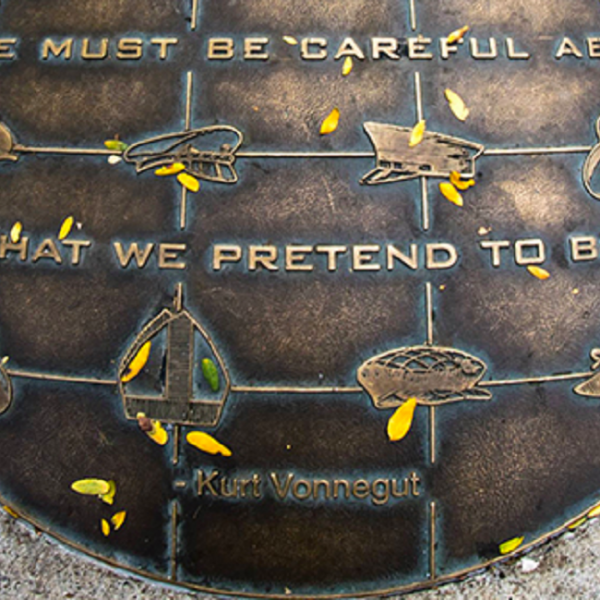John Sutherland on Vladimir Nabokov
Vladimir Nabokov’s Lolita has become a literary classic, read over and over by those who cannot pull themselves away from Humbert Humbert’s troubling yet tragically beautiful prose. In John Sutherland’s Lives of the Novelists: A History of Fiction in 294 Lives, he traces beloved authors like Nabokov back through when their genius was not yet discovered or appreciated. If Lolita is now glorified, high art, it was once, at best, pornography.
John Sutherland—
With the outbreak of war the Nabokovs fled to America. Here, in 1941, Sebastian Knight was published. Nabokov was befriended by literary admirers, notably Edmund Wilson, who helped ease him into a succession of posts at American colleges, teaching comparative literature, Russian, and lepidoptery. His tenure case at
Cornell inspired a famous wisecrack. When, in support of a permanent position, the committee was reminded that he was a distinguished novelist, one member objected: ‘should we then make a rhinoceros professor of zoology?’ His failure to secure a permanent place inspired the ironic campus novel, Pnin (1957). Along with Pale Fire (1962), it reflects Nabokov’s mordant belief that American academics are to a man ‘mediocrities’.
As he liked to jest, a twelve-year-old ‘nymphet’ freed him from this campus mediocracy. The birth of  Lolita was as cosmopolitan as its creator’s career. He showed the novel, rewritten from a 1939 sketch, to Edmund Wilson in 1954. Wilson (who had himself written a ‘dirty book’, The Memoirs of Hecate County) passed Lolita on to his publishers. They turned it down on sight (‘Do you think we’re crazy?’ one editor asked) – the American public wasn’t ready for paedophilia and incest even if packaged in hyper-literary gloss. Eventually Lolita was published in 1955 by Maurice Girodias’s Olympia Press, a Paris firm that specialised in sophisticated porn written in English. Chauvinistically, the French authorities only concerned themselves with French language products – foreigners were perfectly free to corrupt themselves.
Lolita was as cosmopolitan as its creator’s career. He showed the novel, rewritten from a 1939 sketch, to Edmund Wilson in 1954. Wilson (who had himself written a ‘dirty book’, The Memoirs of Hecate County) passed Lolita on to his publishers. They turned it down on sight (‘Do you think we’re crazy?’ one editor asked) – the American public wasn’t ready for paedophilia and incest even if packaged in hyper-literary gloss. Eventually Lolita was published in 1955 by Maurice Girodias’s Olympia Press, a Paris firm that specialised in sophisticated porn written in English. Chauvinistically, the French authorities only concerned themselves with French language products – foreigners were perfectly free to corrupt themselves.
In its green Olympia livery, Lolita enjoyed an underground éclat. In the 1955 Christmas round-ups, Graham Greene cited it as one of his ‘books of the year’ in the (London) Sunday Times. It provoked an apocalyptic diatribe against ‘filth’ from the Sunday Express’s John Gordon, a veteran campaigner for British purity. Greene, even more provocatively, founded a ‘John Gordon Society’, comprising some of London’s leading intellectual lights, to oppose book-banning. All this publicity encouraged the American publisher, Putnam, to buy the book’s rights and a ‘legitimate’ Lolita duly appeared in 1958. It shot to the top of the New York Times bestseller list (contesting the Number 1 spot with another ‘Russian’ work, Dr Zhivago), holding its position for two years.
Excerpted from Lives of the Novelists.Copyright © 2011 by John Sutherland. All rights reserved.





